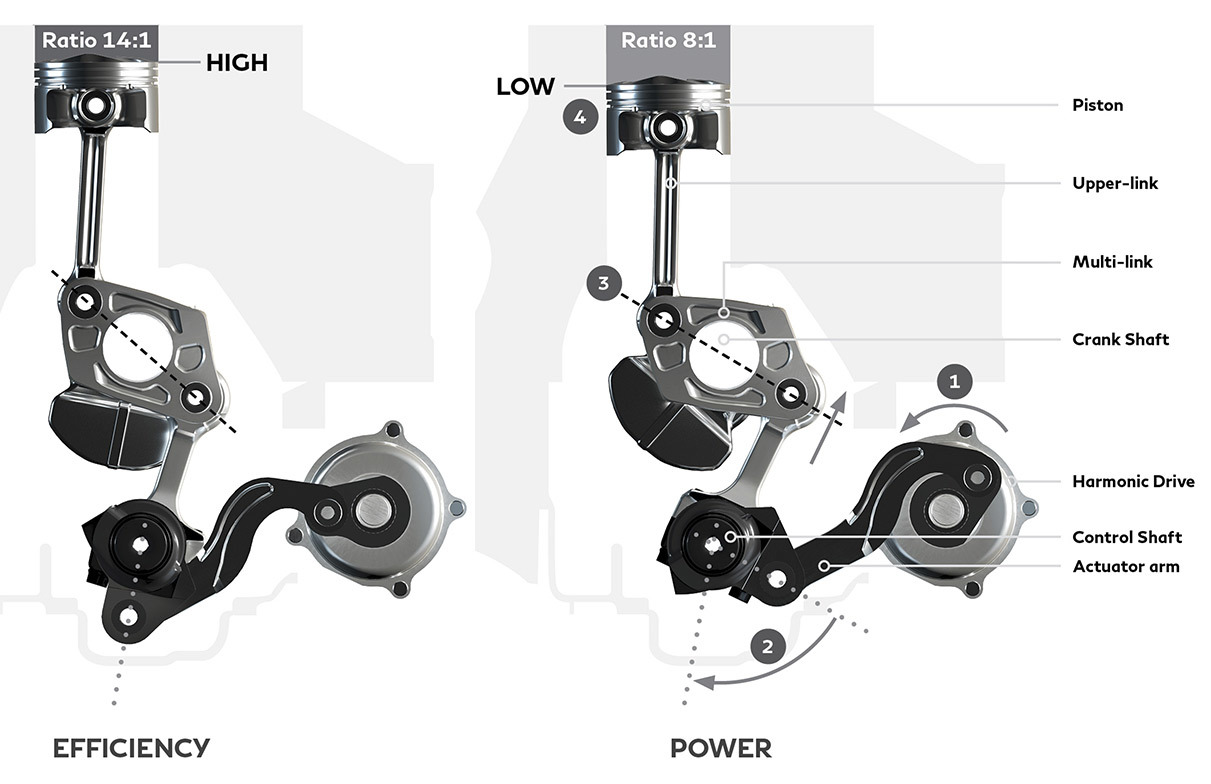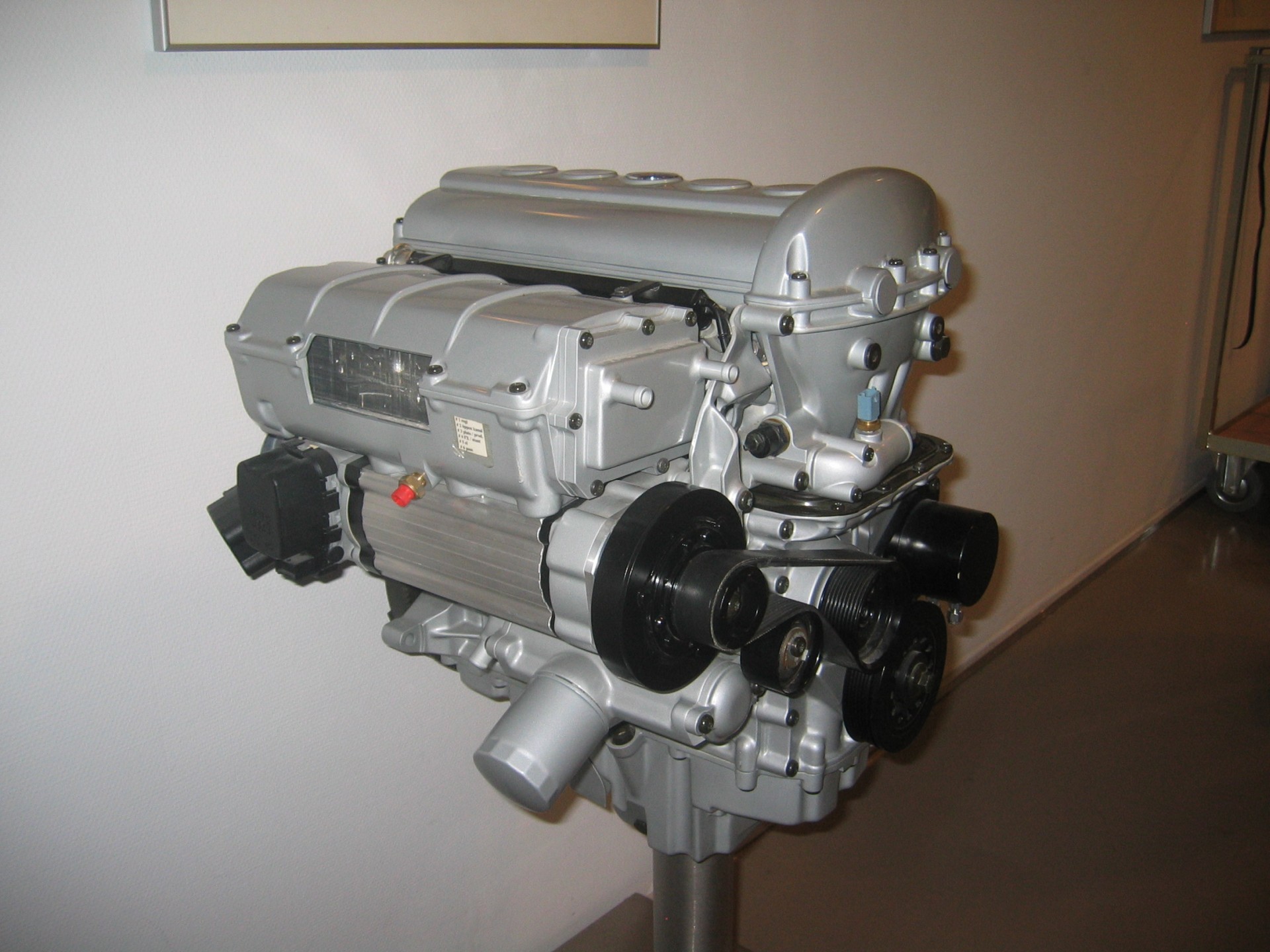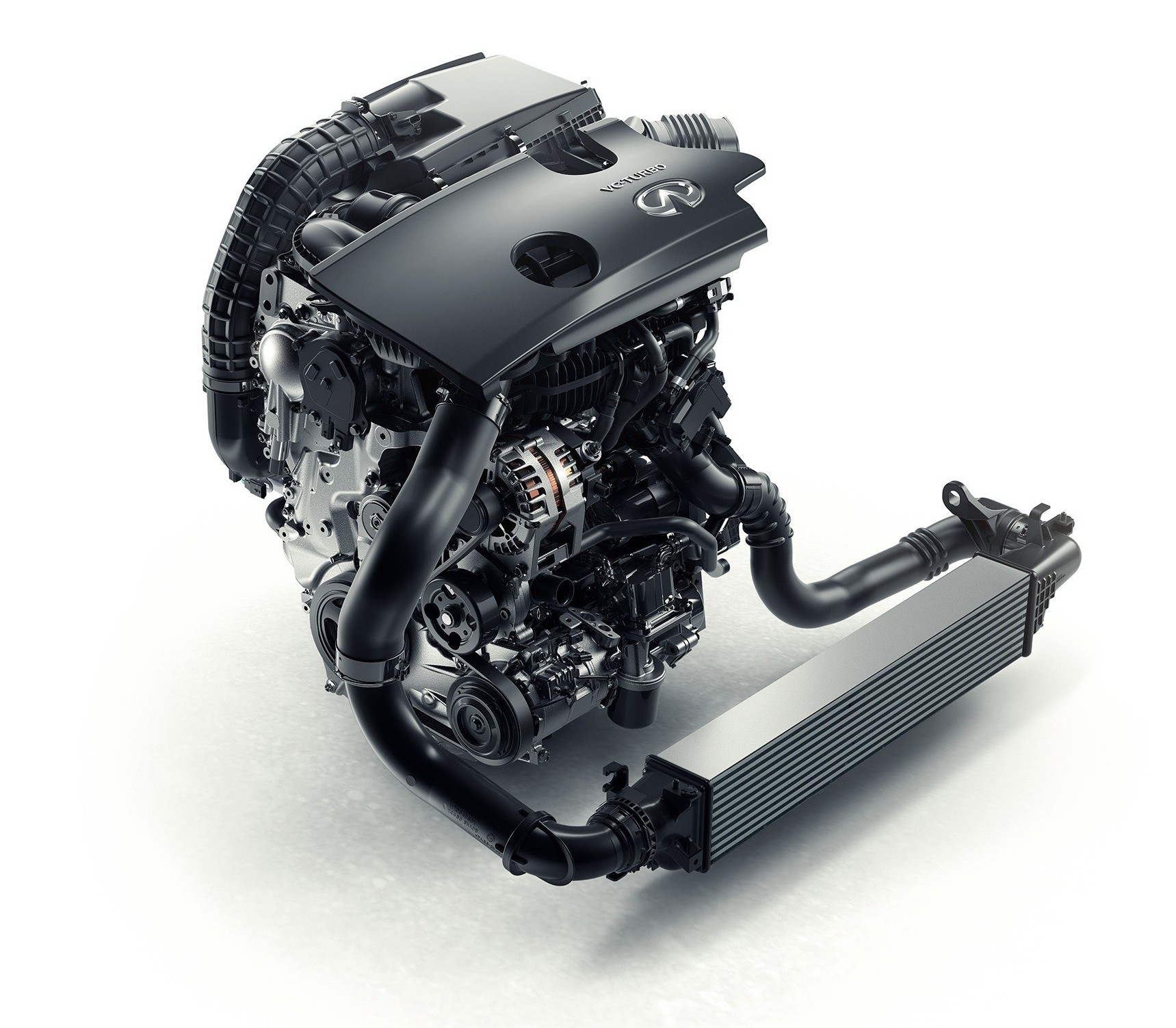Nissan has developed a variable compression engine
The degree of compression of the gaseous combustible mixture in the cylinder varies from 8: 1 to 14: 1

VC-T engine. Image: Nissan
The Japanese automaker Nissan Motor has introduced a new type of gasoline internal combustion engine , which by some parameters is superior to advanced modern diesel engines.
The new Variable Compression Turbo (VC-T) engine can, if necessary, change the compression ratio of the gas mixture, that is, change the stroke of the pistons in the cylinders of the engine. This parameter is usually fixed. Apparently, the VC-T will be the first in the world of ICE with a variable compression ratio of the mixture.
Compression ratio is the ratio of the volume of the overpiston space of the cylinder of an internal combustion engine when the piston is in the lower dead point (full cylinder volume) to the volume of the overpiston space of the cylinder when the piston is in the upper dead point, that is, to the volume of the combustion chamber.
')
Increasing the degree of compression in the general case increases its power and increases the efficiency of the engine, that is, it helps reduce fuel consumption.
In conventional gasoline engines, the compression ratio is usually from 8: 1 to 10: 1, and in sports cars and race cars it can reach 12: 1 or more. As the compression ratio rises, the engine needs more octane fuel.

VC-T engine. Image: Nissan
The illustration shows the difference in the pitch of the pistons at different compression ratios: 14: 1 (left) and 8: 1 (right). In particular, a mechanism for changing the compression ratio from 14: 1 to 8: 1 is demonstrated. It happens this way.
- If it is necessary to change the compression ratio, the Harmonic Drive module is activated and moves the actuator lever.
- The actuator lever rotates the drive shaft ( Control Shaft in the diagram).
- When the drive shaft rotates, it changes the angle of the multi-link suspension ( Multi-link in the diagram)
- Multi-link suspension determines the height to which each piston is able to rise in its cylinder. Thus, the degree of compression changes. The bottom dead point of the piston, apparently, remains the same.
The design is patented by Nissan ( US Patent No. 6,505,582 of June 14, 2003).
The change in the degree of compression in the internal combustion engine can be in some sense compared with the change in the angle of attack in the screws of the adjustable pitch - a concept that has been used in propellers and propellers for many decades. The variable pitch of the screw allows you to maintain the efficiency of the propeller close to optimal regardless of the speed of movement of the carrier in the stream.
The technology for changing the degree of compression of the internal combustion engine makes it possible to preserve the engine's power while adhering to strict standards for engine efficiency. This is probably the most realistic way to comply with these regulations. “Everyone is working on a variable compression ratio and other technologies to significantly improve the efficiency of gasoline engines,” said James Chao, Managing Director for Asia-Pacific and IHS Consultant, “For at least the last twenty years or so.” . It is worth mentioning that in 2000, the company Saab showed a prototype of such an engine Saab Variable Compression (SVC) for Saab 9-5, for which it won a number of awards at technical exhibitions. Then the Swedish company bought the concern General Motors and stopped work on the prototype.

Saab Variable Compression Engine (SVC). Photo: Reedhawk
The VC-T engine promises to bring to the market in 2017 with Infiniti QX50 cars. The official presentation is scheduled for September 29 at the Paris Motor Show. This two-liter four-cylinder engine will have about the same power and torque as the 3.5-liter V6 engine, which will take its place, but will provide fuel savings of 27% compared with it.
Nissan engineers also say that the VC-T will be cheaper than modern advanced diesel engines with turbocharging, and will fully comply with modern standards for emissions of nitrogen oxide and other exhaust gases - such rules apply in the European Union and some other countries.
After Infiniti, it is planned to equip other Nissan vehicles with the new engines and, possibly, the partner company Renault.

VC-T engine. Image: Nissan
It can be assumed that the complicated construction of the internal combustion engine at first will hardly be distinguished by reliability. It makes sense to wait several years before buying a car with a VC-T engine, unless you want to participate in the testing of experimental technology.
Source: https://habr.com/ru/post/369579/
All Articles